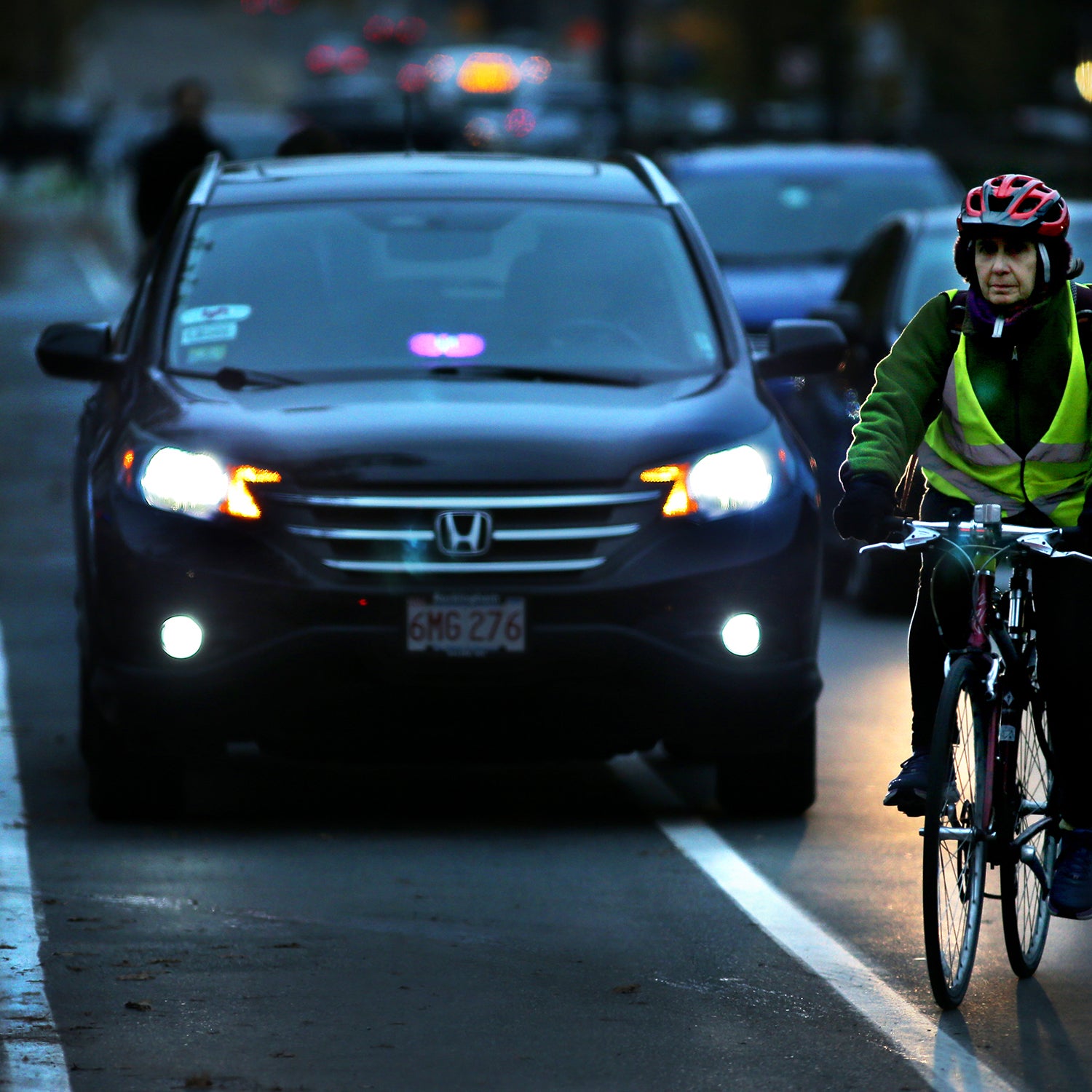This past summer I was riding along the Hudson River Greenway in Manhattan when I came across a pair of riders repairing a flat. They needed a tube, so I stopped to provide one and to offer an additional hand. In rendering said assistance, my body and bicycle unavoidably occupied a very small sliver of the bicycle travel lane, and a passing cyclist loudly admonished me to “Get outta the bike lane!”
At first I was outraged. For one thing, the dismantled bicycle should have made it more than apparent to all but the dimmest of bulbs that we were engaged in a repair. Had we been enjoying a picnic or playing pat-a-cake then sure, call us out for our selfishness. But fixing a flat? For another, the woman who had incurred the flat was a new rider who was extremely grateful for the assistance, and the last thing we need is people giving up on bikes because of the twin indignities of flat tires and condescending schmucks.
But then I thought more about the rider’s behavior, and while it still annoyed me, I also had to admit that his attitude wasn’t entirely his fault. That’s not to say it was in any way my fault—far from it, my stopping to help a fellow rider in distress means I’m an unimpeachable good human being—but it is the fault of the cycling community at large. Shaming people (drivers, mostly) who block bike lanes has become a staple of social media. As riders rush to upload photos of the latest obstruction and revel in the validation of their indignity from their fellow riders, even the most benign encroachment becomes a capital offense. The result is a phenomenon I refer to as Pathological Bike Lane Obstruction Fixation Disorder (PBLOFD): the expectation that one’s forward momentum while utilizing a bike lane for its intended purpose should never be impeded for any reason, coupled with compulsion to berate the cause of the impediment.
When it comes to blocked bike lanes, it’s important to acknowledge that our reaction can at times be out of all proportion to the actual inconvenience and danger created by the obstruction. It’s a problem that’s much larger than any one individual.
Consider, for example, that perennial blocker of bike lanes, the UPS truck. It can sometimes seem as though at least 75 percent of Bike Twitter is indignant riders posting pictures of , or . Yes, the sheer ubiquity of the problem is a clear sign that our consumer habits are changing the streets and that we need to rethink how we accommodate parcel delivery. (In New York City we’re beginning to do that, albeit slowly, with and .) However, it is highly unlikely that the majority of UPS drivers wake up thinking to themselves, “How can I fuck with a cyclist today?” Most are simply trying to do their job as best they can amid difficult circumstances. And while they do wind up in pretty much everybody else’s way in the process, let those who have never ordered anything from Amazon cast the first stone. Pending a long-term solution, the best course of action is to simply go around them and get on with your day.
Of course, when it comes to calling out bike-lane blockers, no two cyclists will agree on what is reasonable and what constitutes PBLOFD. Some throw tantrums over anything and everything that impedes their progress, whereas I’ve come to the conclusion after years of riding that it’s almost never worth it to make a fuss. Whatever you believe, I’d argue that when you’re probably suffering from this disorder. as you ride right into one of the city’s most popular tourist attractions instead of simply choosing an alternate route is also symptom, as is upon people who don’t really have the room to get out of your way. Getting mad at drivers is one thing, but yelling at fellow cyclists and pedestrians is almost always PBLOFD, as is . Sometimes people block the bike lane because they’re assholes, and sometimes they block the bike lane because they’re subject to the same spatial constraints that you are, and from your lofty position in the saddle you’re not always able to tell the difference. Plus, assholes are best avoided anyway, since you never know when they’re just .
Acknowledging the existence of PBLOFD in no way means you condone bike-lane blocking or absolve your municipality when it comes to poor street design or lack of enforcement. However, it does mean you recognize that whether you walk or ride or dart around on a Onewheel, sooner or later something’s going to get in your way, and it may require you to adjust your course or even—gasp—stop. People often say that blocked bike lanes “,” when what they actually do is force cyclists to slow or stop and change course. This is an important distinction, because we’re not particles in an atom-smasher, we’re humans on bicycles with free will. Blocked bike lanes are deeply irritating and even dangerous, and of course they need to be addressed, but I suspect the rage we feel as cyclists in these situations is less about actual danger and more about the fact that having to go around someone makes us feel like we just lost a pissing match.
When it comes to riding a bike, there’s the way things are, and the way things should be. Working towards the latter is necessary, but when you’re actually out on the streets it’s equally necessary to reconcile yourself to the former and act accordingly. You can’t control whether or not people get in your way in the bike lane, but you can control how you react to it, and your ride’s a lot more enjoyable when you’re not busy hating everybody. If you let your PBLOFD go untreated, you may start barking at pedestrians and people fixing flats on the side of the road, and before you know it anything other than rose petals scattered lovingly in your path is liable to get you bent out of shape like a wheel with a broken spoke. And that’s no way to live.


